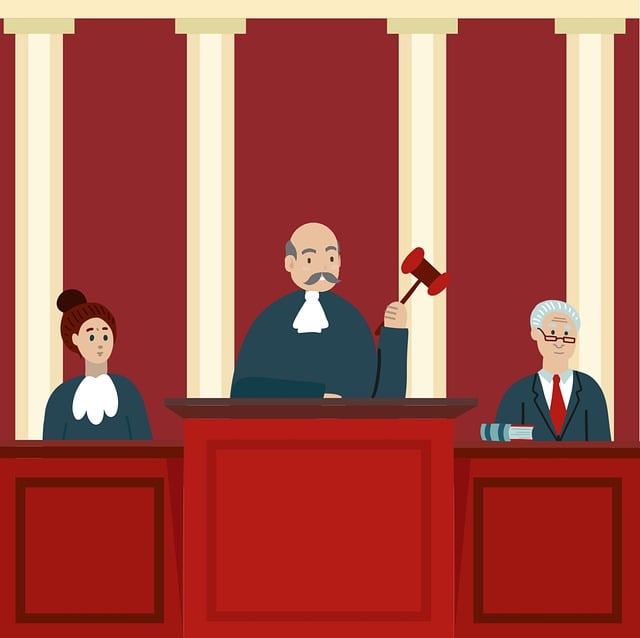Contempt of court involves non-compliance with court orders, ranging from financial obligations (civil) to willful disobedience (criminal). Modification requests balance order enforcement with adaptability to changed circumstances. Key components of a modification petition include stating why the original order is no longer viable and outlining alternative legal strategies. Both parties use evidence, arguments, negotiations, and legal interpretations to navigate complexities. Strategic planning, legal expertise, robust evidence, and understanding contempt legal strategies are crucial for successful modifications.
“Contempt of court” is a serious matter, but it doesn’t have to be an insurmountable hurdle. This comprehensive guide explores legal solutions for modifying contempt orders, providing crucial insights into the process and strategies. From understanding the definition and types of contempt to navigating the legal framework and key components of a successful petition, we demystify these complex issues. Discover effective tactics employed in contempt cases and learn step-by-step how to modify an existing order. Equip yourself with the knowledge needed to tackle contempt legal strategies head-on.”
- Understanding Contempt of Court: Definition and Types
- Legal Framework for Modification Requests
- Key Components of a Successful Modification Petition
- Common Strategies and Tactics in Contempt Cases
- Navigating the Process: Steps to Modify a Contempt Order
Understanding Contempt of Court: Definition and Types

Contempt of court is a serious legal issue that occurs when an individual or entity fails to comply with a court order. It’s a deliberate act of disobedience, which can range from refusing to pay child support as ordered to ignoring a subpoena. Understanding the nature and types of contempt is crucial for anyone navigating legal strategies involving modification requests.
There are two primary types: civil and criminal. Civil contempt involves non-compliance with an order designed to enforce or protect a party’s rights, often related to financial obligations or disclosure requirements. Criminal contempt, on the other hand, pertains to willful disobedience of a court order intended to maintain order and respect for judicial proceedings, which can result in fines and imprisonment. These distinctions are vital as they dictate the appropriate legal strategies and potential consequences for contempt modification requests.
Legal Framework for Modification Requests

Contempt modification requests operate within a robust legal framework designed to balance the need for enforcing court orders with the flexibility to adapt to changed circumstances. The primary legislation governing contempt of court matters provides courts with the authority to modify or terminate contumacious behavior, offering a range of legal strategies to address violations. These include fines, imprisonment, and community service, among others, each tailored to the severity and nature of the contempt.
The process begins when a party alleges non-compliance with a court order, leading to an evidentiary hearing where both sides present their cases. Judges play a pivotal role in evaluating the evidence, considering extenuating factors, and determining the most suitable course of action. This approach ensures that individuals facing contempt charges are afforded due process while allowing courts to modify orders to reflect current realities, fostering a more dynamic and just legal system.
Key Components of a Successful Modification Petition

When drafting a modification petition for a contempt order, several key components must be included to ensure its success. Firstly, the petitioner should clearly articulate why the original contempt order is no longer viable or just. This could involve changes in circumstances, new evidence, or an unforeseen event that makes compliance impossible or excessively burdensome. It’s crucial to present these arguments coherently and supported by relevant facts or legal precedents.
Secondly, the petition must outline alternative legal strategies or solutions that address the underlying issues without resorting to contempt. This demonstrates a willingness to cooperate and find a mutually agreeable resolution. By presenting practical alternatives, the petitioner can show the court that they are actively engaged in good-faith efforts to resolve the dispute, enhancing the chances of a favorable modification.
Common Strategies and Tactics in Contempt Cases

In contempt cases, both parties often employ a range of legal strategies and tactics to advocate for their positions. A common approach is to gather substantial evidence to support their argument—this can include documents, witness testimonies, or any relevant information that strengthens their case. Presenting a clear and well-structured argument based on existing laws and precedents is crucial. Legal experts may also suggest negotiating settlements or reaching out to the opposing party for a mutually agreeable solution before proceeding to formal legal actions.
Another strategy involves understanding the specific contempt laws and regulations applicable to the case. This requires careful examination of the court orders, contracts, or agreements that were previously established. Contempt lawyers often focus on interpreting these legal documents to determine if there has been a violation or non-compliance. They may also challenge the validity or clarity of the original order if necessary, aiming to modify it through legal channels. Effective communication and advocacy are key throughout the process, ensuring all arguments are presented clearly and persuasively.
Navigating the Process: Steps to Modify a Contempt Order

Navigating the process of modifying a contempt order involves several crucial steps that require careful consideration and strategic planning. Firstly, individuals or entities seeking to modify an existing contempt order should consult with legal professionals experienced in family law or civil litigation. These experts can provide invaluable guidance on the specific requirements and procedures applicable to their jurisdiction. They will also help determine if the case aligns with criteria for contempt modification, ensuring a solid foundation for the request.
Next, gathering comprehensive evidence is paramount. This includes financial records, communication logs, and any other documentation that supports the argument for altering the original order. Legal strategies may involve presenting changed circumstances, demonstrating inability to comply, or showing good faith efforts to fulfill obligations. Through meticulous preparation and a thorough understanding of contempt legal strategies, parties can effectively navigate this complex process, aiming for a favorable outcome that balances justice with their unique circumstances.






